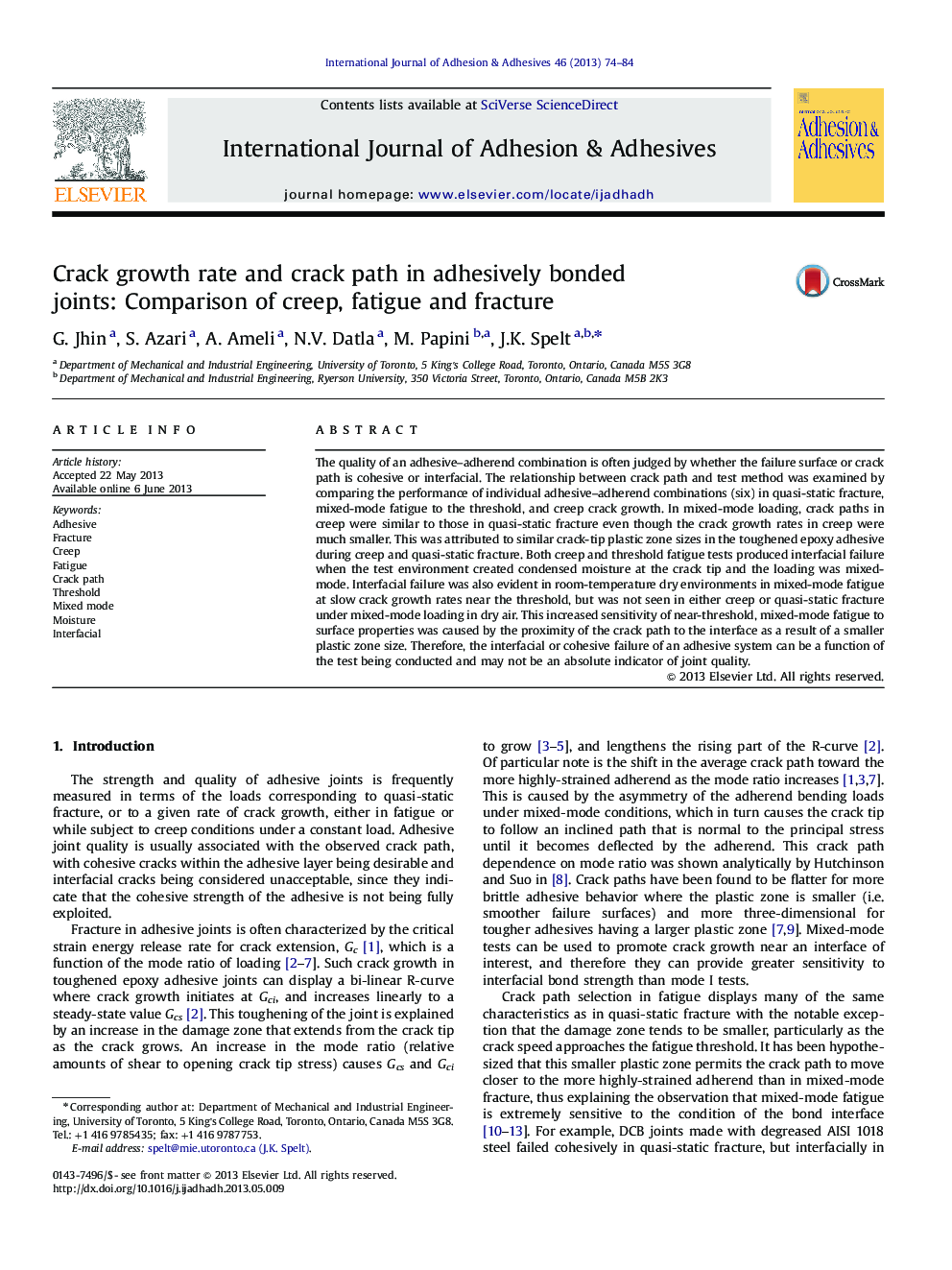| کد مقاله | کد نشریه | سال انتشار | مقاله انگلیسی | نسخه تمام متن |
|---|---|---|---|---|
| 780011 | 1463491 | 2013 | 11 صفحه PDF | دانلود رایگان |

The quality of an adhesive–adherend combination is often judged by whether the failure surface or crack path is cohesive or interfacial. The relationship between crack path and test method was examined by comparing the performance of individual adhesive–adherend combinations (six) in quasi-static fracture, mixed-mode fatigue to the threshold, and creep crack growth. In mixed-mode loading, crack paths in creep were similar to those in quasi-static fracture even though the crack growth rates in creep were much smaller. This was attributed to similar crack-tip plastic zone sizes in the toughened epoxy adhesive during creep and quasi-static fracture. Both creep and threshold fatigue tests produced interfacial failure when the test environment created condensed moisture at the crack tip and the loading was mixed-mode. Interfacial failure was also evident in room-temperature dry environments in mixed-mode fatigue at slow crack growth rates near the threshold, but was not seen in either creep or quasi-static fracture under mixed-mode loading in dry air. This increased sensitivity of near-threshold, mixed-mode fatigue to surface properties was caused by the proximity of the crack path to the interface as a result of a smaller plastic zone size. Therefore, the interfacial or cohesive failure of an adhesive system can be a function of the test being conducted and may not be an absolute indicator of joint quality.
Journal: International Journal of Adhesion and Adhesives - Volume 46, October 2013, Pages 74–84